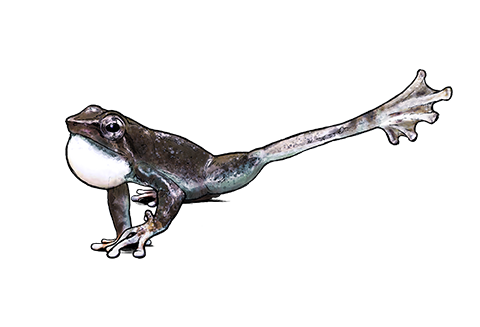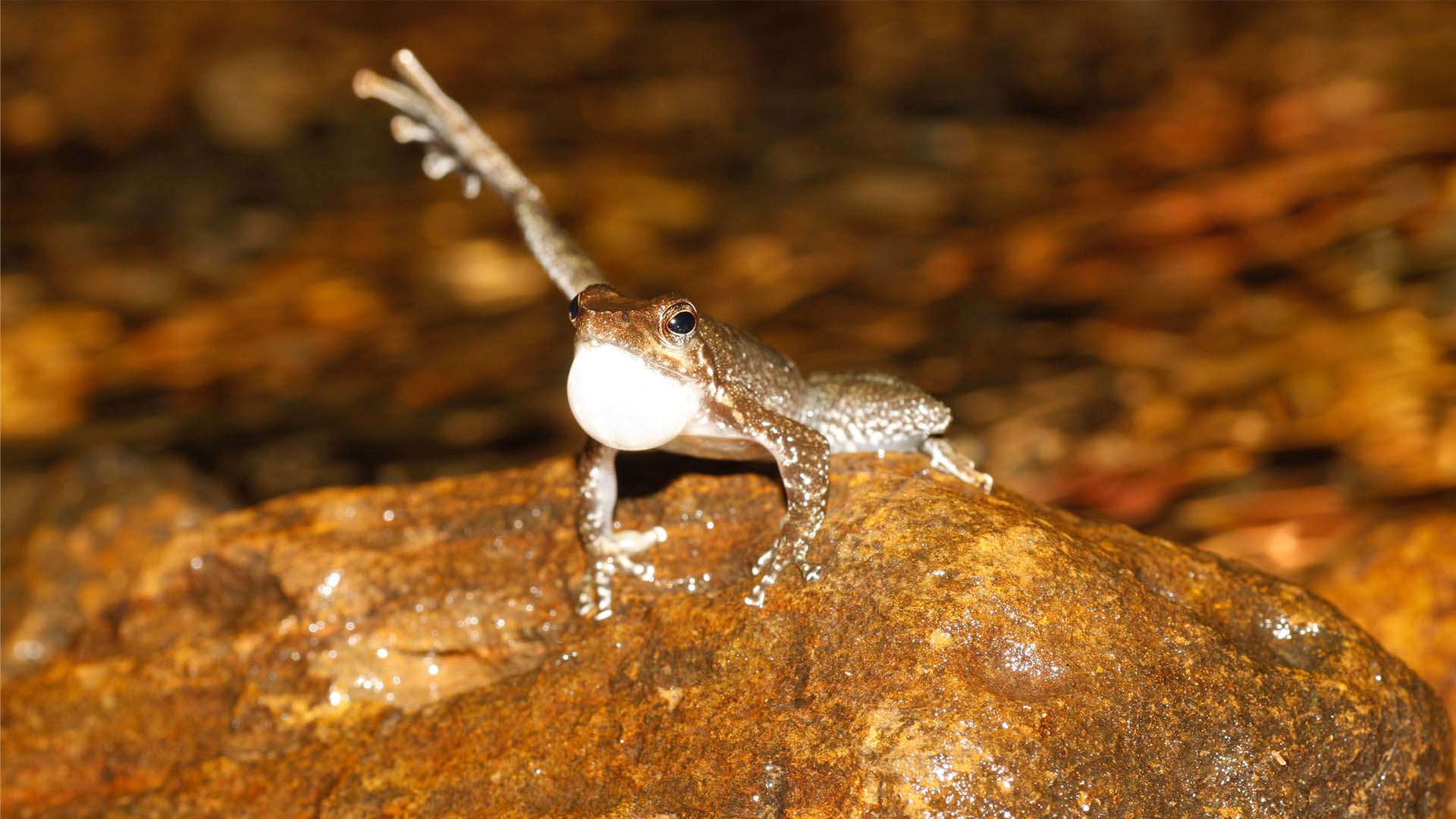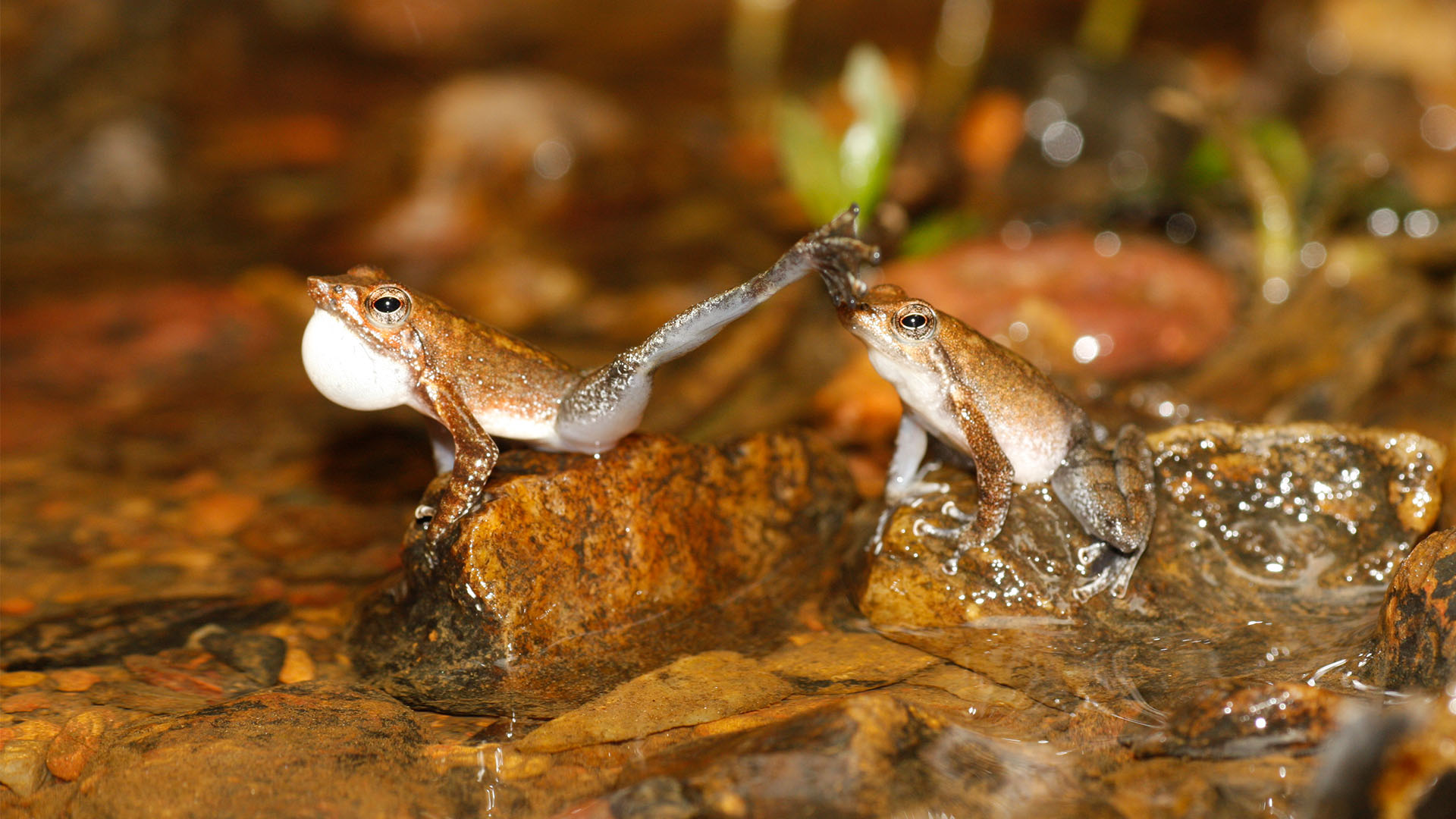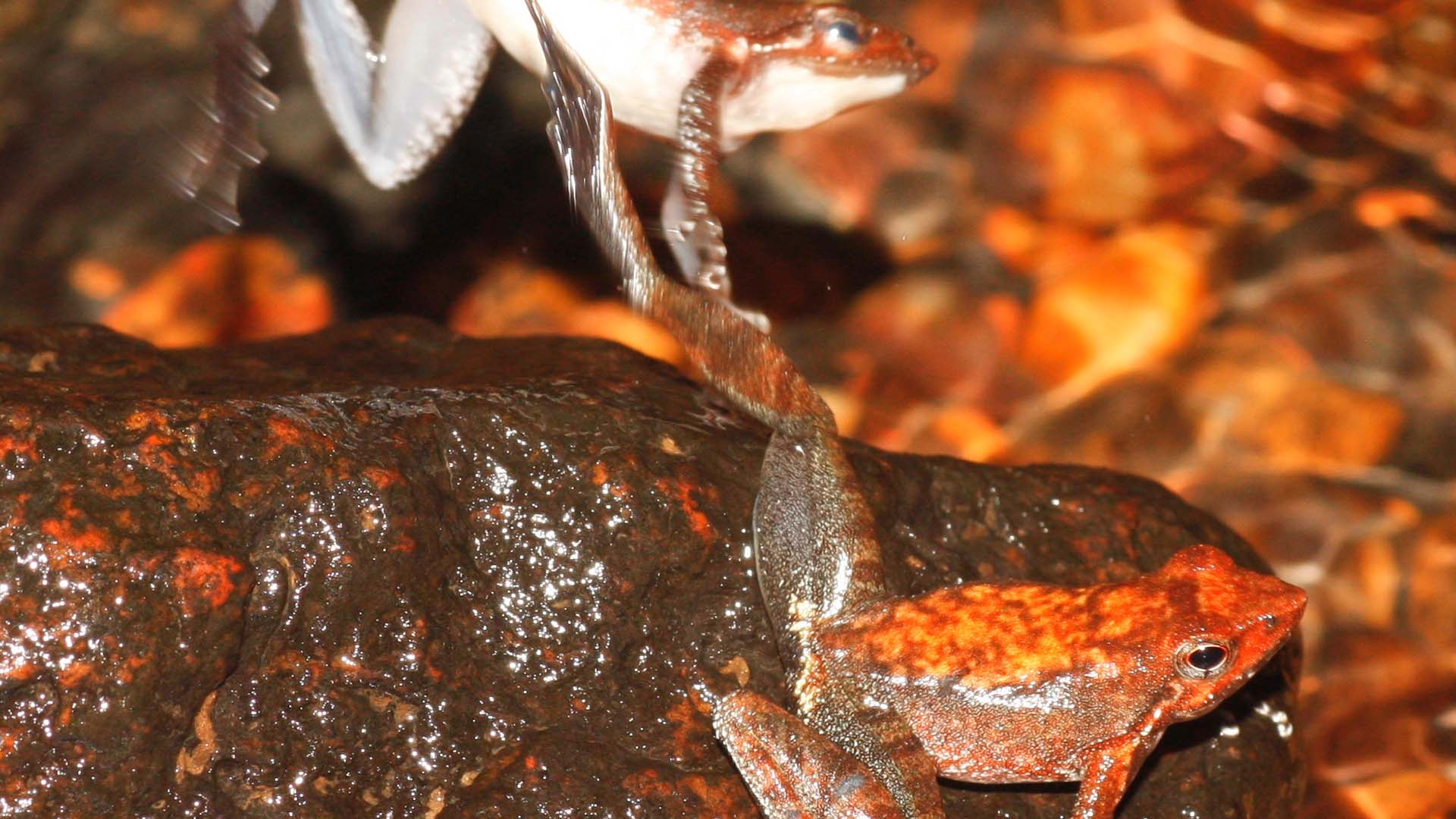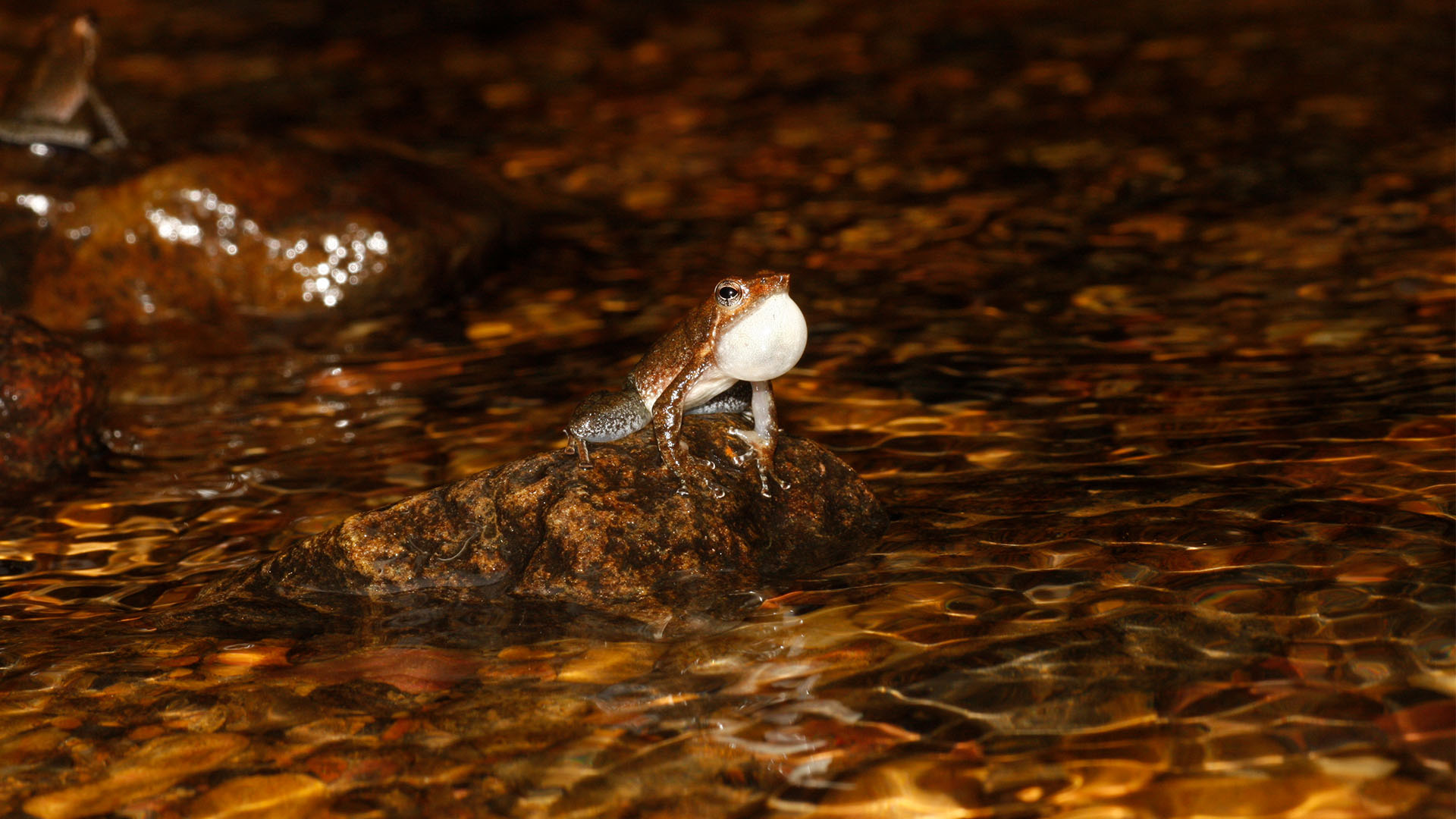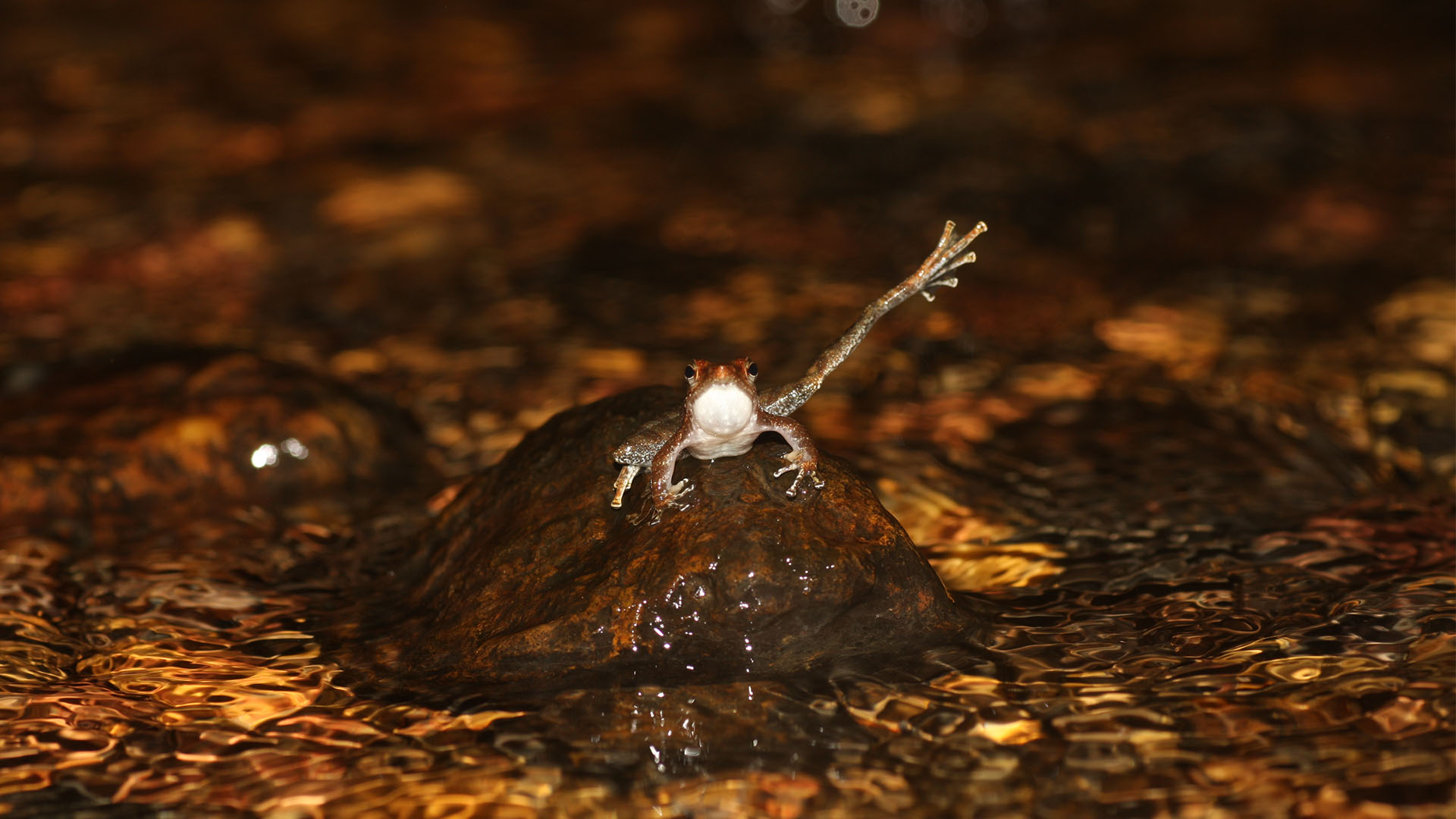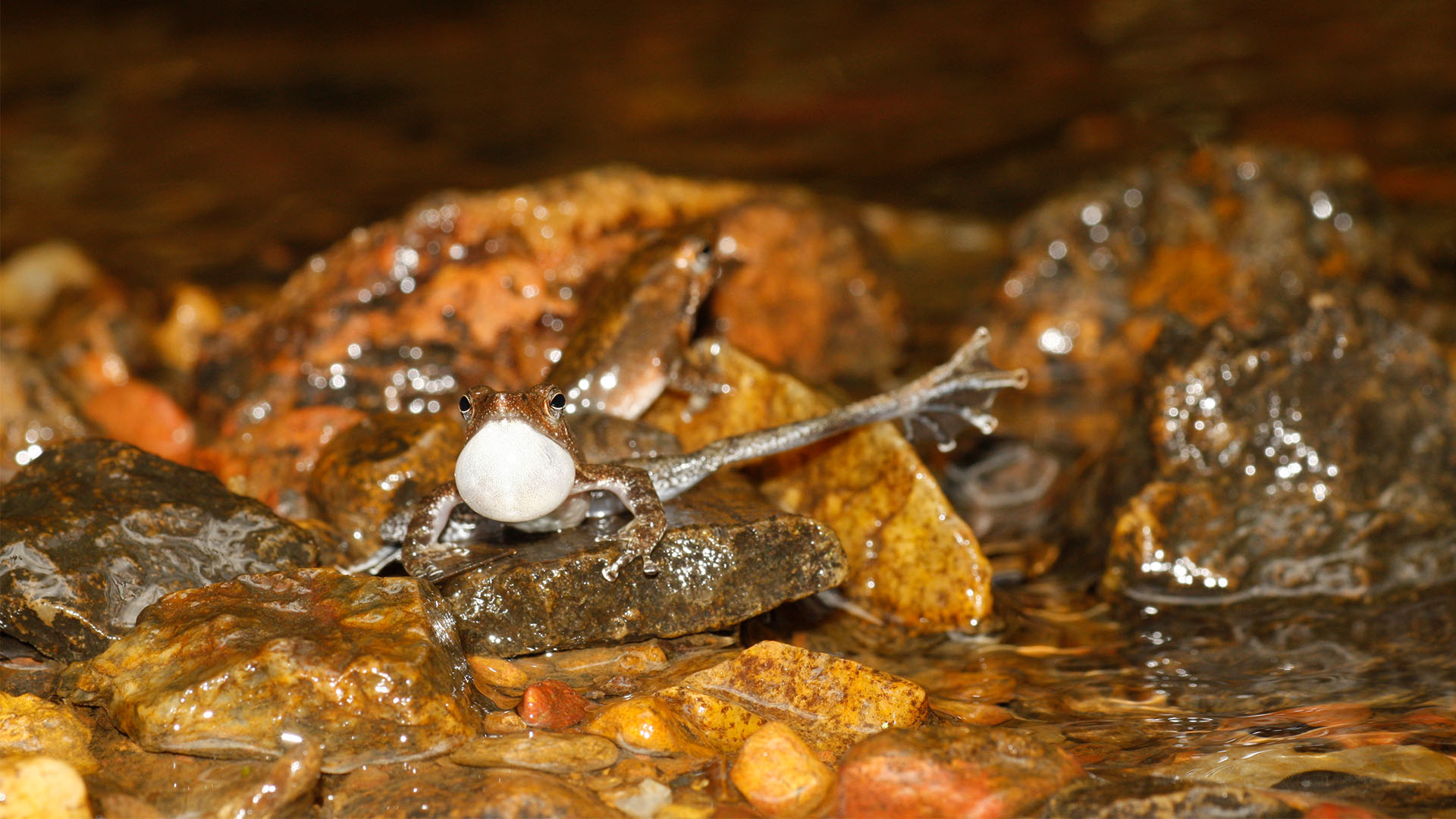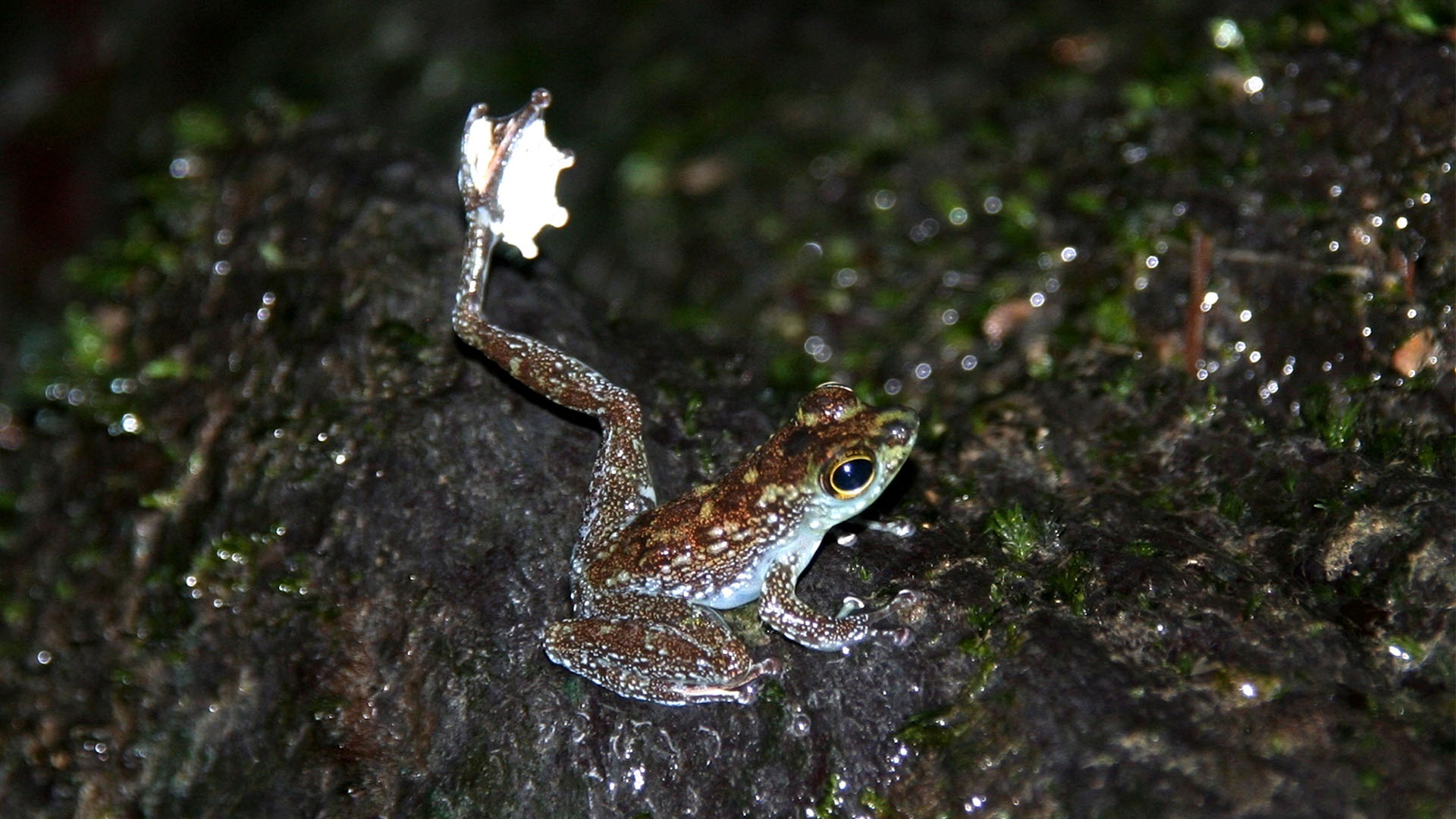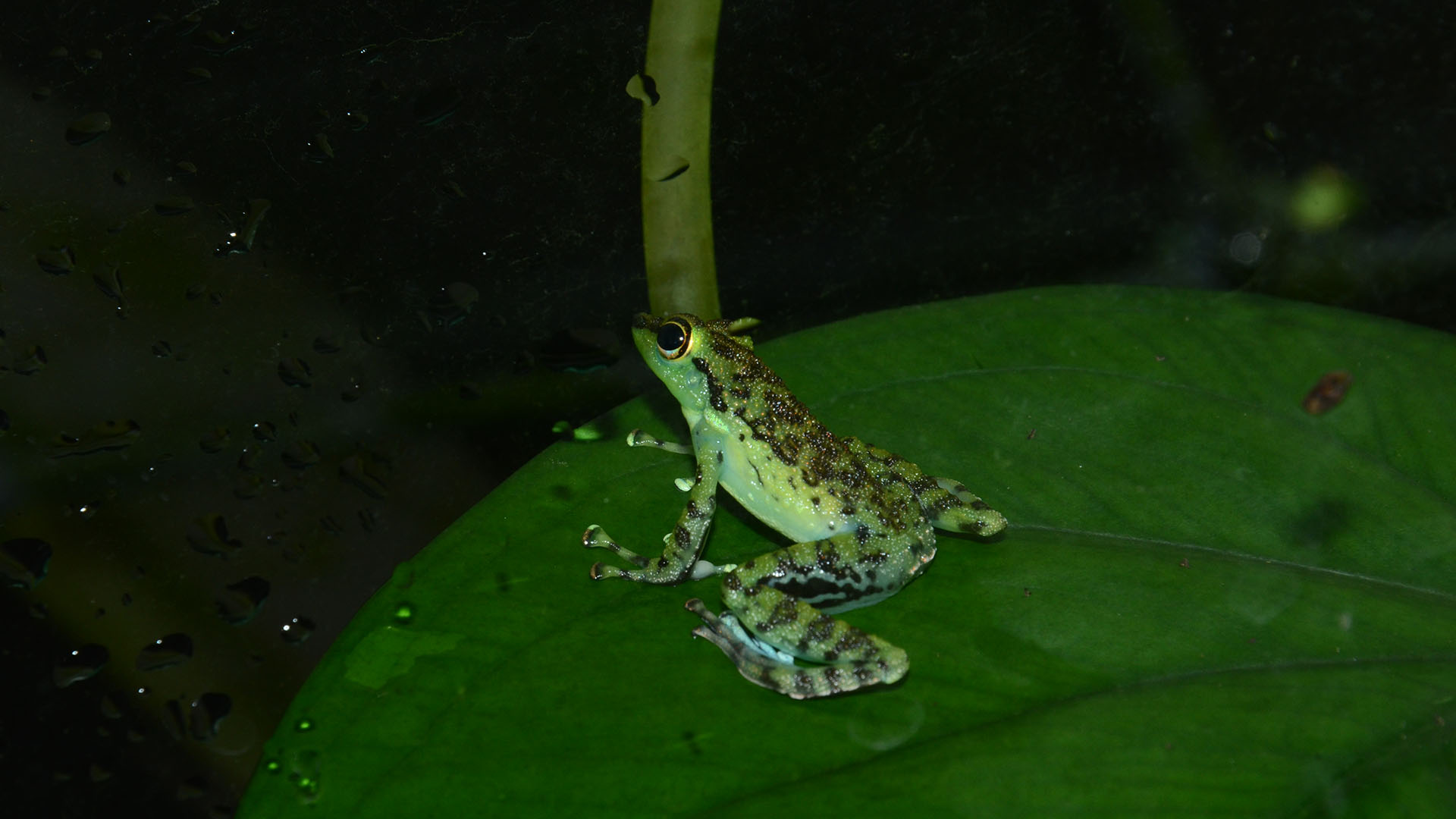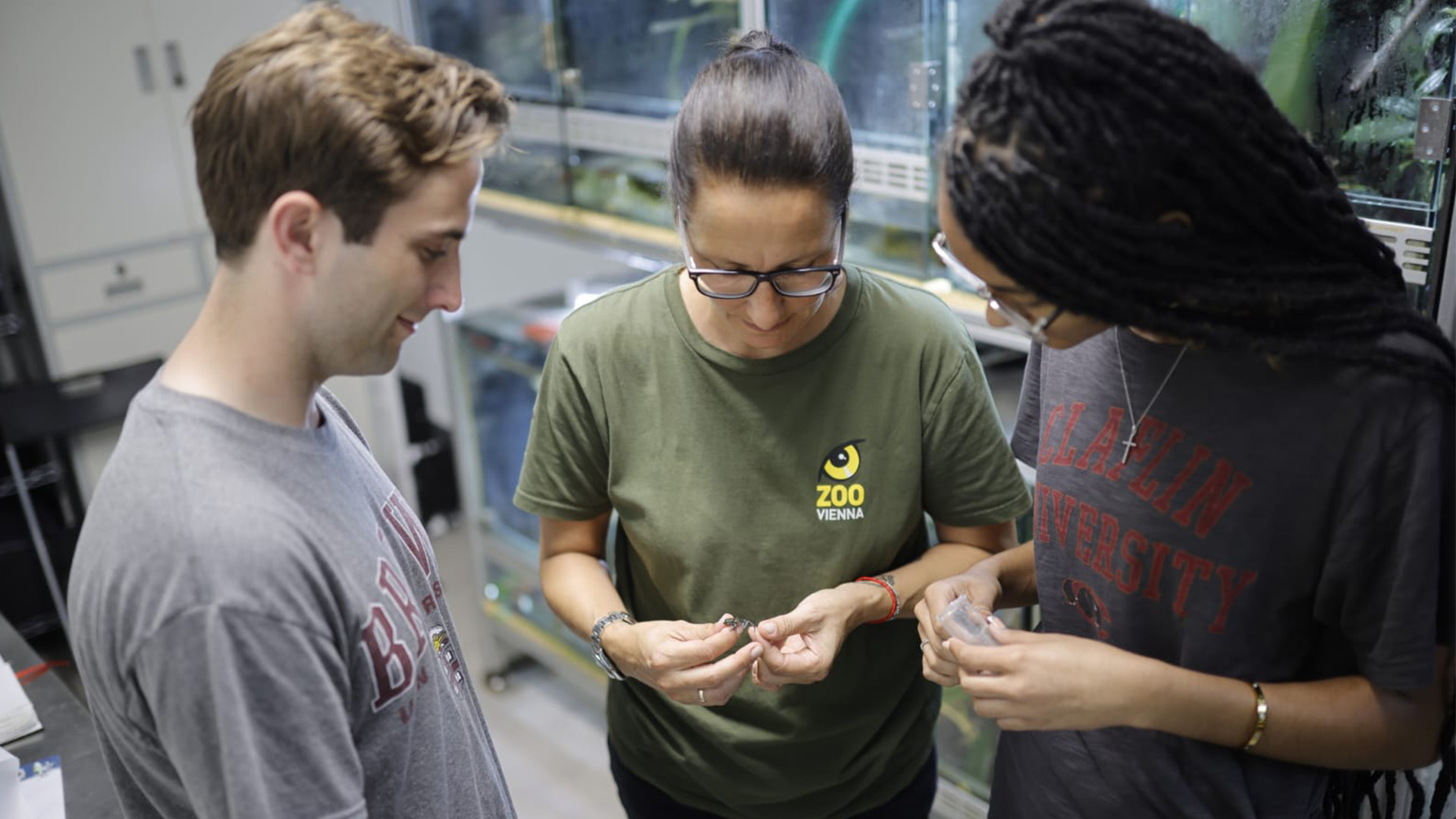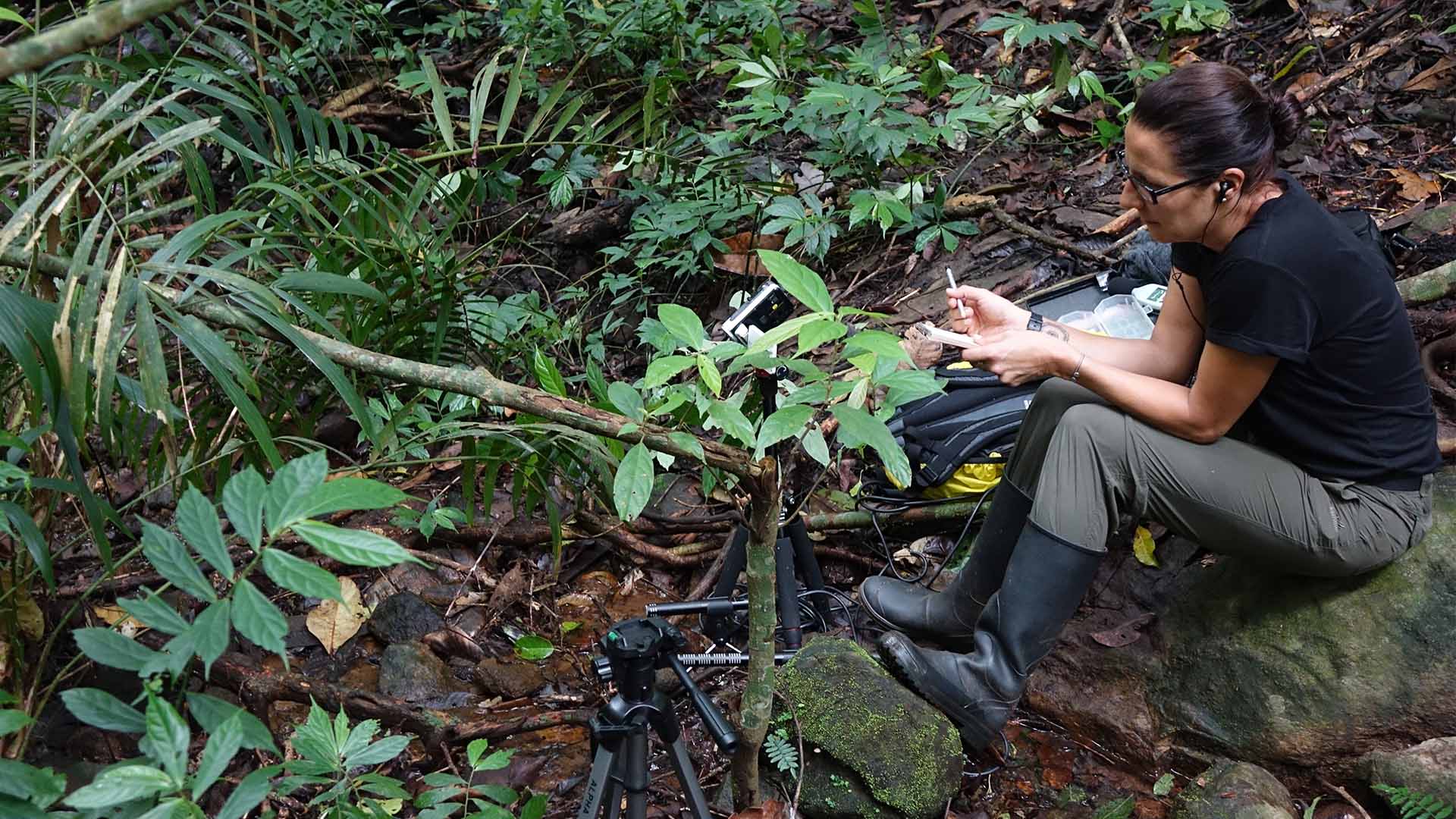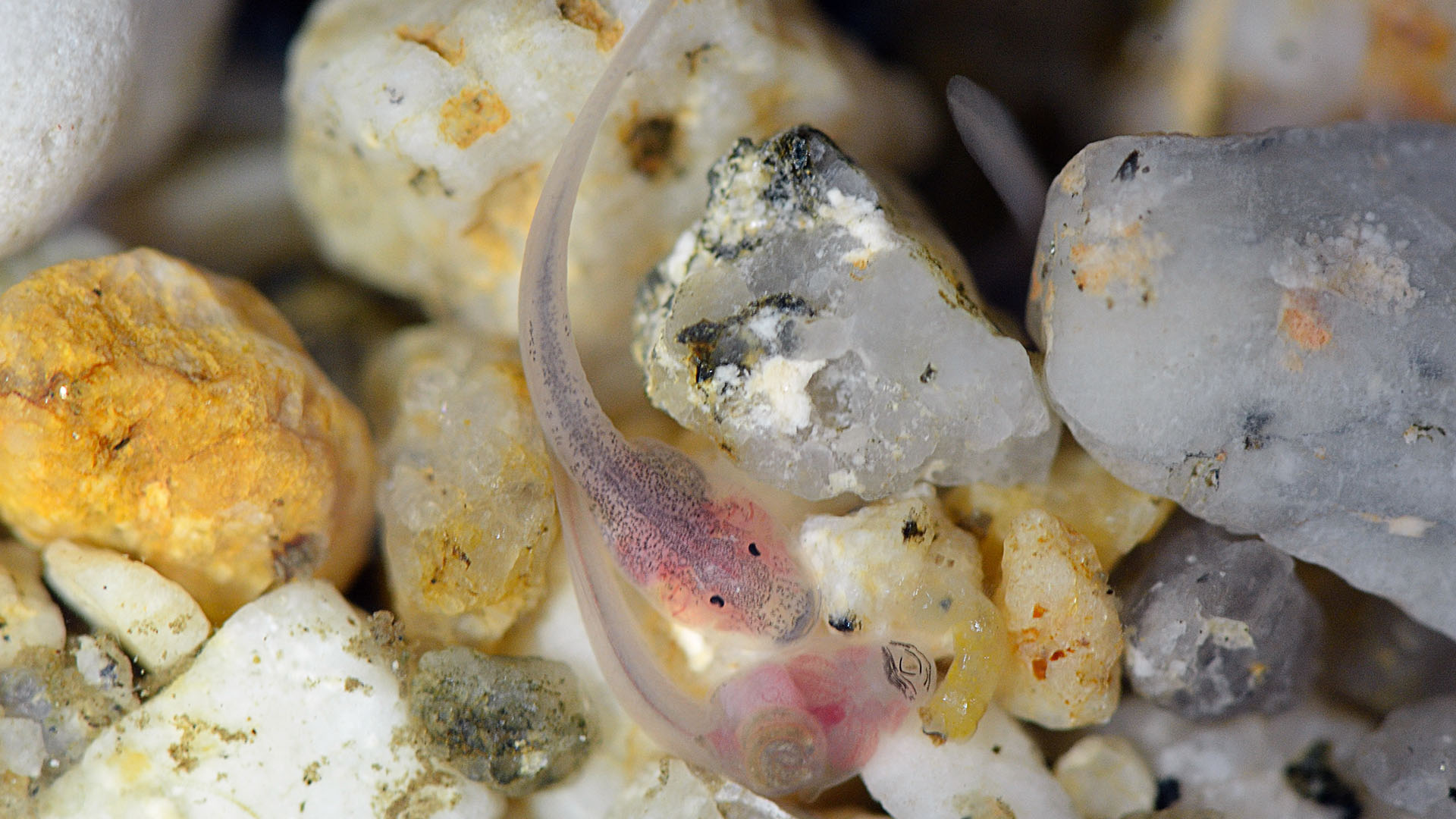Lesser rock skipper
Staurois parvus
Lesser rock skipper
Staurois parvus
CC goal
10 breeders
Status 11/2025
CC goal
500 animals
Status 11/2025
CC goal
10 breeders
Status 11/2025
CC goal
500 animals
Status 11/2025
What do you do when it’s too loud to communicate acoustically? You resort to sign language. Man greift auf Zeichensprache zurück. A whole range of frog species have specialized in living near waterfalls and rapids – extremely loud habitats that drown out classic frog calls. In order to be able to communicate over long distances, they have developed fascinating “sign language” strategies.
The flag alphabet
These frogs have a simple yet effective trick for “conversations” over long distances: they wave. Their webbed feet are strikingly colored, bright white or yellow. They are hoisted like little flags when the frogs stretch out their long hind legs and present their fanned-out webbed feet. The colors can vary depending on the species and age. One of these species is the Lesser rock skipper frog from Borneo, which measures just two to three centimetres.
The waving Indian
A foot is worth a thousand words
When a male frog waves, it lifts one leg, extends it slowly outwards and backwards in an arc and then quickly pulls it back down again vertically. Some waving frogs also use both legs to wave at the same time. When stretched out, the conspicuous bright coloration of the feet is clearly visible. Other males recognize the signal at a great distance and respond accordingly. The waving seems to be mainly used for rivalries between males, it is more or less a long-distance duel – with considerable potential for aggression. Measurements have shown that the more testosterone, the more intense the waving.
Research on the Lesser rock skipper by Schönbrunn Zoo and the University of Vienna
Close-range communication
Despite their sophisticated flag alphabet, the winker frogs are not mute.They use calls to communicate at close range. In order to assert themselves against the noise of the current, they use particularly high frequencies. They can also do both at the same time: a male frog can flirt with a female by calling, while waving his legs to keep his sexmates at a distance.
What do you do when it's too loud to communicate acoustically? You resort to sign language. Man greift auf Zeichensprache zurück.
© Norbert Potensky
No more waving?
The Lesser rock skippers of Borneo are only known from a few locations and live in a relatively limited distribution area closely tied to waterfalls and fast-flowing rivers in the rainforest. However, rainforests are also particularly endangered habitats on Borneo and are being cut down at an alarming rate, for example to make way for oil palm plantations. Citizen Conservation’s conservation breeding project is intended to help ensure that we do not one day have to wave goodbye to this species, which is also of particular interest for scientific research.
The world’s first reproduction of the Lesser rock skipper was achieved at Schönbrunn Zoo. Previously, it was not even known what the tadpoles looked like or how they lived. © Norbert Potensky
For breeders
Basic information on biology and breeding
The Lesser rock skipper is only recommended for experienced terrarium keepers who can provide a very wet terrarium with constantly moving water on a permanent basis. Size of the aquaterrarium at least approx. 100 x 60 x 70 cm, cascading waterfall, flowing water, lush planting. 24-25 °C all year round, slightly cooler at night. Feeding with small feeding animals.
